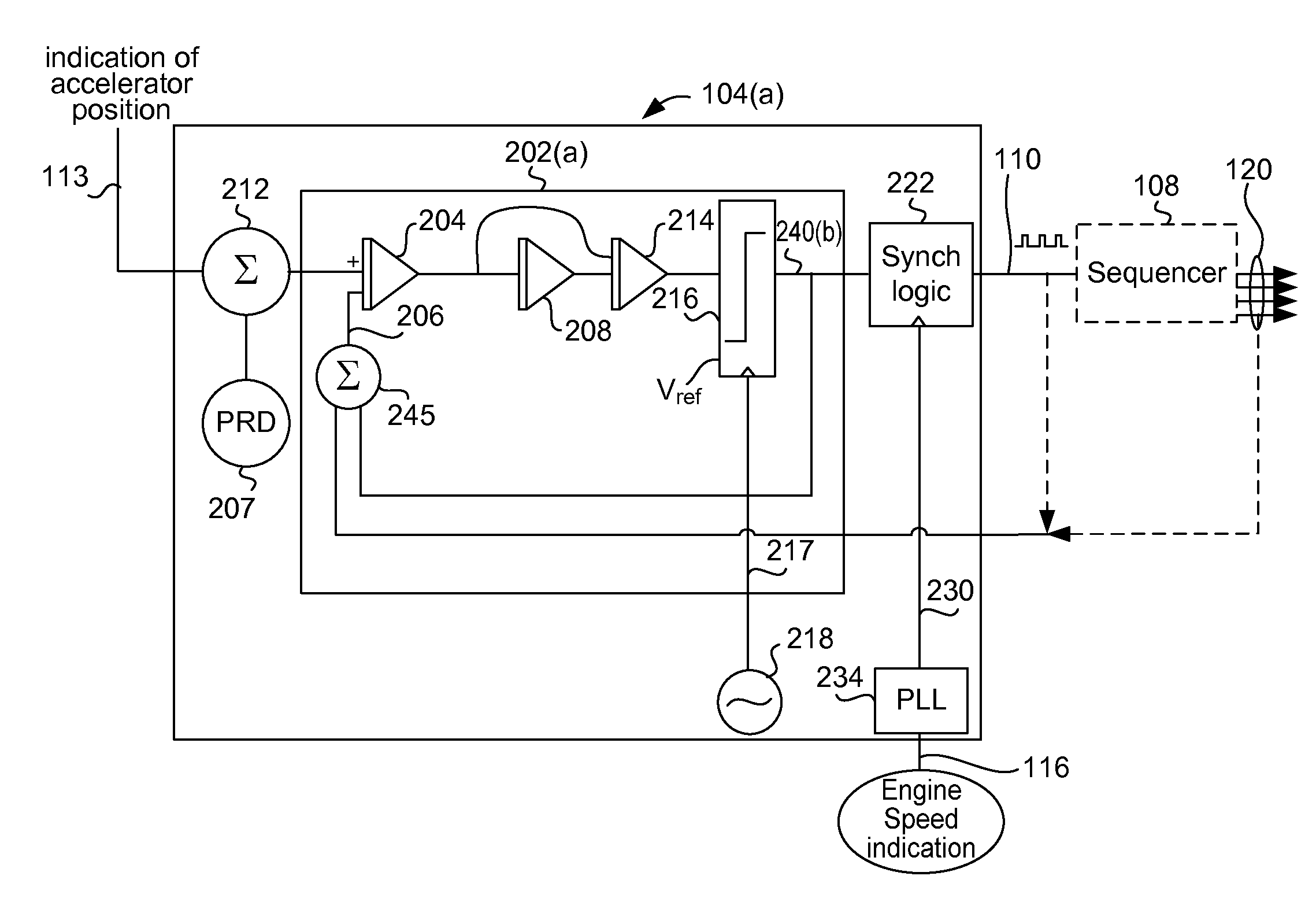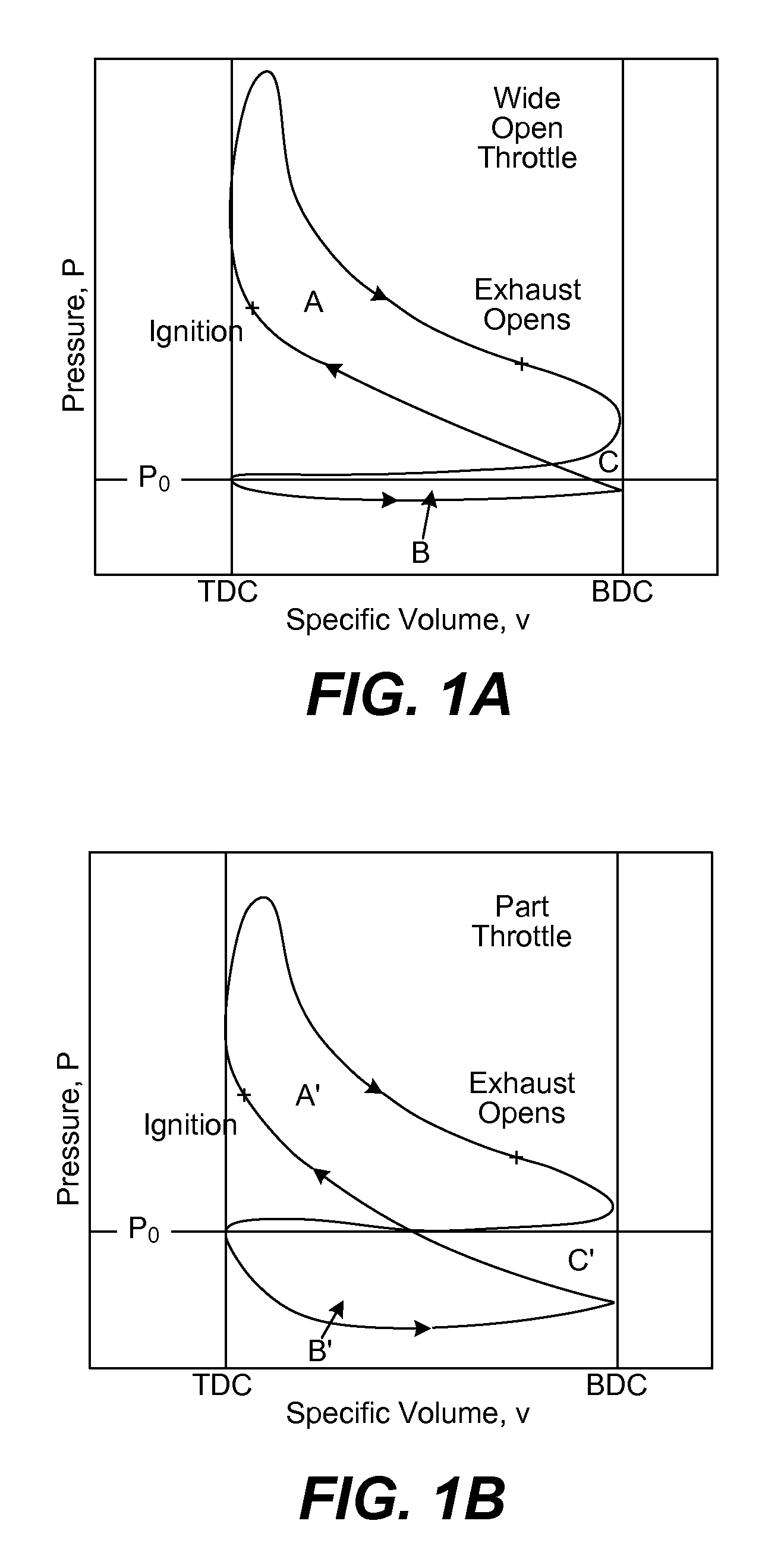Internal combustion engine control for improved fuel efficiency
a technology for internal combustion engines and fuel efficiency, applied in the direction of electrical control, process and machine control, instruments, etc., can solve the problems of engine operation under conditions well below their optimal thermodynamic, more power (and often far more power) than desired or appropriate, and less torque output, so as to reduce the probability of resonant vibration, enhance emission characteristics, and control the torque more precisely
- Summary
- Abstract
- Description
- Claims
- Application Information
AI Technical Summary
Benefits of technology
Problems solved by technology
Method used
Image
Examples
Embodiment Construction
[0035]The present invention relates generally to methods and arrangements for controlling the operation of internal combustion engines to improve their thermodynamic and fuel efficiencies. Various aspects of the invention relate to motorized vehicles that utilize such engine control and to engine control units suitable for implementing such control.
[0036]Most internal combustion engines are arranged to vary the amount of air and / or fuel that is delivered to the cylinders (or other working chambers) based on the engine output that is requested by the user or otherwise required at any given time. However, the thermodynamic efficiency of a fixed size cylinder is not the same at every air / fuel level. Rather, the thermodynamic efficiency is best when an optimal amount of air and fuel is delivered to the cylinder to achieve maximum permissible compression and optimal combustion efficiency. Since internal combustion engines need to be able to operate under a wide variety of different loads...
PUM
 Login to View More
Login to View More Abstract
Description
Claims
Application Information
 Login to View More
Login to View More - R&D
- Intellectual Property
- Life Sciences
- Materials
- Tech Scout
- Unparalleled Data Quality
- Higher Quality Content
- 60% Fewer Hallucinations
Browse by: Latest US Patents, China's latest patents, Technical Efficacy Thesaurus, Application Domain, Technology Topic, Popular Technical Reports.
© 2025 PatSnap. All rights reserved.Legal|Privacy policy|Modern Slavery Act Transparency Statement|Sitemap|About US| Contact US: help@patsnap.com



